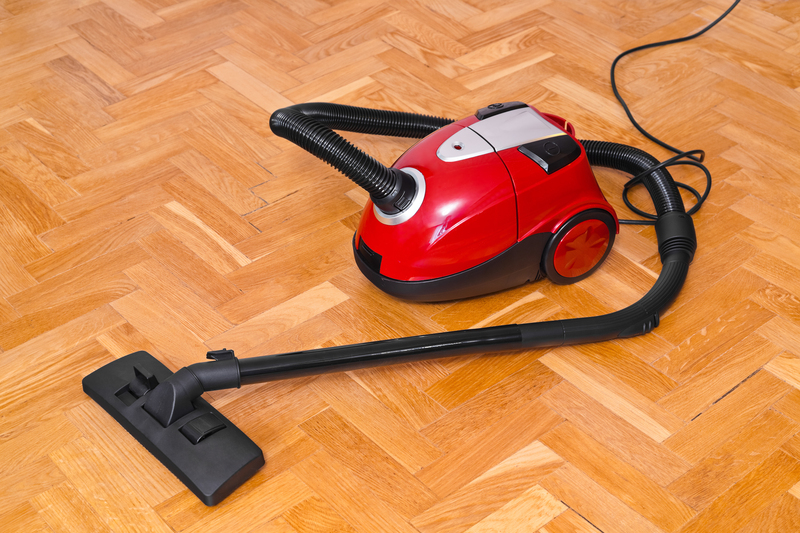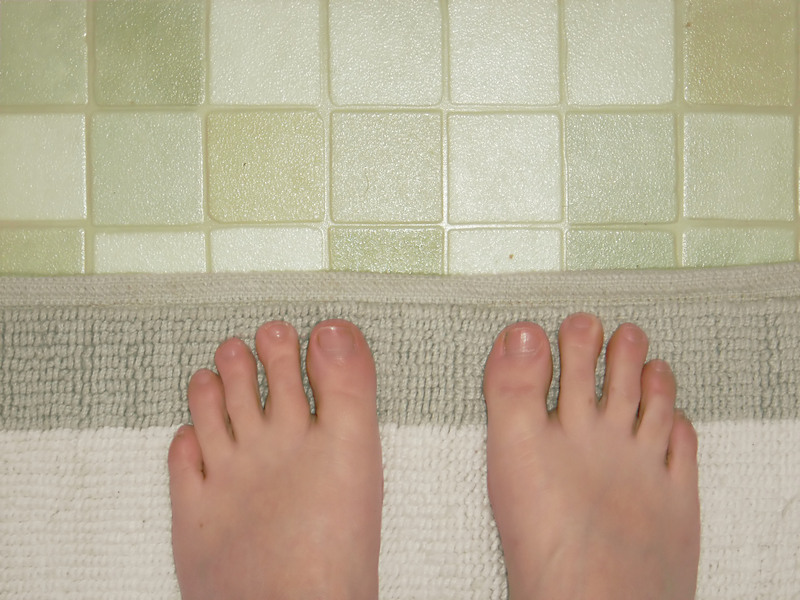Jewelry Cleaning Strategies for a Lustrous Finish
Posted on 26/08/2025
Jewelry Cleaning Strategies for a Lustrous Finish
There's nothing quite like the radiant sparkle of freshly cleaned jewelry. Whether it's the glint of a diamond ring or the gleam of a gold necklace, keeping your treasured pieces pristine requires the right techniques and consistency. In this comprehensive guide, we'll explore proven jewelry cleaning strategies for a lustrous finish, ensuring your beloved adornments remain as brilliant as the day you got them.

Understanding the Importance of Proper Jewelry Cleaning
Your jewelry is an investment--both financially and sentimentally. Regular cleaning preserves not only its beauty but also its longevity. Over time, everyday items like rings and bracelets accumulate dirt, oils, sweat, and environmental residue, dulling their appearance and potentially damaging delicate settings. Mastering optimal jewelry cleaning methods is crucial to keeping your treasures sparkling and safe.
- Prevents buildup of grime, dust, and body oils
- Reduces risk of scratches and tarnishing
- Preserves structural integrity--especially for gemstone settings
- Highlights gemstones and metal's natural shine
Before you begin, always consider your jewelry's unique materials and settings. Different stones and metals demand distinct approaches to avoid unintentional damage.
General Jewelry Cleaning Strategies for All Jewelry Types
Most jewelry can benefit from a gentle routine clean, but knowing the basics will prevent accidental harm:
1. Prepare a Cleaning Solution
- Mix a few drops of mild dish soap in lukewarm water.
- Avoid harsh chemicals or hot water, especially for fragile gems.
2. Soak and Gently Brush
- Let jewelry soak in the solution for 10-15 minutes.
- Use a soft-bristle toothbrush to gently scrub away debris--especially into crevices.
3. Rinse Thoroughly
- Rinse items under lukewarm running water (secure small pieces in a strainer).
- Ensure all soap residue is removed to prevent dullness.
4. Dry and Polish
- Pat dry with a lint-free cloth. Avoid using tissues or paper towels which may scratch.
- For extra brilliance, gently polish with a jewelry polishing cloth.
Note: Do not soak porous or delicate gemstones such as pearls, opals, or turquoise; they require specialized care.
Adapting Jewelry Cleaning Techniques for Specific Materials
Gold and Gold-Plated Jewelry
Gold jewelry generally stands up well to soap and water, but gold-plated items are more sensitive:
- Clean in warm, soapy water with a soft cloth.
- Do not scrub gold-plated jewelry aggressively--this can strip the plating.
- Polish real gold with a chamois or microfiber cloth to restore shine.
Silver Jewelry
Silver tarnishes easily but is simple to revive:
- Use commercial silver polish or make a paste with baking soda and water (apply gently).
- Never use toothpaste or abrasive substances--these scratch silver.
- Store silver in anti-tarnish bags after cleaning to maintain its shine.
Diamonds and Other Hard Gemstones
Diamonds, sapphires, and rubies are resilient but still need proper care:
- Soak in a solution of mild soap and water.
- Use a baby toothbrush to clean under settings where oils collect.
- For an extra sparkle, gently wipe with an alcohol-moistened lint-free cloth.
Pearls, Opals, and Porous Gemstones
Pearls, opals, turquoise, and other soft or organic gems require very specialized jewelry cleaning strategies:
- Wipe with a barely damp, soft cloth immediately after wearing.
- Never soak or submerge--these stones can absorb liquids and get damaged.
- Store separately and avoid storing in plastic bags, as pearls need some moisture from the air.
Costume and Fashion Jewelry
Costume jewelry, often made with base metals and glued stones, can deteriorate quickly if cleaned incorrectly:
- Wipe gently with a soft, dry cloth after each wear.
- Avoid water and any immersion; water can weaken glues.
- If deep cleaning is needed, use a cotton swab moistened with a little water and immediately dry.
Advanced Jewelry Cleaning Methods for a Mirror-Gloss Shine
Ultrasonic Jewelry Cleaners
An ultrasonic cleaner uses high-frequency sound waves to dislodge dirt and grime:
- Excellent for durable gems like diamonds and platinum.
- Always check if your pieces are safe for ultrasonic cleaning; fragile, heat-treated, or porous stones may crack or become damaged.
- Follow manufacturer's instructions and limit use to items without glued-in stones.
Steam Cleaning
Steam cleaning uses bursts of hot steam to remove debris:
- Effective for gold, platinum, and certain gemstones--never for pearls, opals or fragile gems.
- Allows deep cleaning without harsh chemicals.
- Often best left to professionals due to the risk of burns or damage.
Professional Jewelry Cleaning Services
If you're caring for heirlooms, high-value pieces, or aren't sure of your jewelry's materials, professional cleaning is a wise choice. Jewelers have safe, high-grade cleaning systems and can inspect your jewelry for loose or damaged settings.
- Bring items in 1-2 times a year.
- Request an inspection and cleaning, especially for engaged or wedding rings subject to daily wear.
DIY Natural Jewelry Cleaning Solutions
Baking Soda Paste
- Mix three parts baking soda with one part water.
- Apply with a soft cloth, gently rub, and rinse well.
Vinegar Soak (for Silver)
- Soak tarnished silver in a cup of white vinegar mixed with two tablespoons of baking soda--let sit for two hours, rinse, and dry.
Aluminum Foil and Baking Soda (for Heavy Silver Tarnish)
- Line a bowl with foil, fill with hot water, add a tablespoon of baking soda and salt.
- Place silver pieces inside. The chemical reaction removes tarnish quickly--rinse and dry.
Always test homemade solutions on a small area first. Avoid these methods for any gemstone jewelry or antique pieces prone to damage.
Jewelry Maintenance Tips for Everlasting Lustre
- Remove jewelry before showering, swimming, or exercise to prevent exposure to chemicals and sweat.
- Store jewelry in a clean, dry place--ideally in a lined jewelry box or pouch.
- Keep pieces separate to avoid scratches and tangling.
- Apply makeup, hair products, and perfume before putting on jewelry to minimize residue buildup.
Common Jewelry Cleaning Mistakes to Avoid
- Using toothpaste or baking soda on soft gemstones--can cause abrasion.
- Boiling or using harsh chemicals--can damage stones, loosen adhesives, or cause discoloration.
- Ignoring loose prongs or settings--may result in lost stones during cleaning.
- Forgetting to consult specific care instructions for special jewelry types, especially for antiques or family heirlooms.
The Proper Way to Store Your Cleaned Jewelry
- Use anti-tarnish strips for silver and gold pieces.
- Wrap delicate or pearl jewelry in soft cloths, away from hard objects.
- Invest in jewelry boxes with divided compartments to prevent scratches and knotting.
Storage is an underrated but essential jewelry care strategy. Clean jewelry that's poorly stored will accumulate new blemishes and quickly lose its brilliance.
Eco-Friendly and Safe Jewelry Cleaning Practices
- Opt for biodegradable, non-toxic cleaning solutions to minimize environmental harm.
- Always dispose of cleaning products responsibly, especially if using commercial polishes or wipes.
- Use reusable, washable cloths and limit single-use products as part of your jewelry cleaning routine.
Sustainable cleaning not only protects your valuables but also supports the health of our planet.

Frequently Asked Questions About Jewelry Cleaning
How often should jewelry be cleaned?
For pieces worn daily like rings or watches, clean every two to four weeks. Special occasion items can be cleaned as needed, but all jewelry should receive a professional inspection and cleaning annually.
Can ultrasonic cleaners be used for all jewelry?
Not all jewelry is suitable for ultrasonic cleaning. Avoid using this method for soft, porous, glued, heat-treated, or antique pieces.
What's the safest at-home method for cleaning most jewelry?
Mild soap and water paired with a soft brush is the universal go-to method. Avoid soaking for non-metal or organic stones.
Does cleaning jewelry make it wear out faster?
No, gentle cleaning actually preserves jewelry by removing corrosive buildup and spotting repairs early.
Conclusion: Achieve and Maintain a Lustrous Jewelry Finish
Mastering the art of jewelry cleaning is key to preserving your precious collection's allure and shine. With a careful blend of gentle DIY solutions, targeted techniques for different materials, and professional support, you'll enjoy every piece at its most radiant for years to come.
Remember, a lustrous finish is the result of both regular cleaning and consistent, thoughtful care. Treat your jewelry with respect--and it will continue to reward you with glorious, show-stopping sparkle day in and day out.
Follow these jewelry cleaning strategies and witness your favorite adornments transform--gleaming, gleaming, and ever-lustrous.





